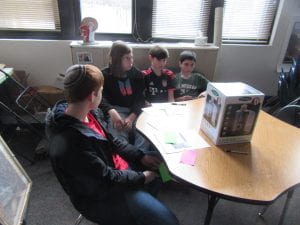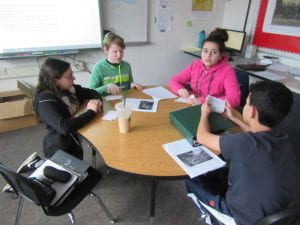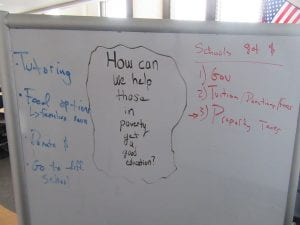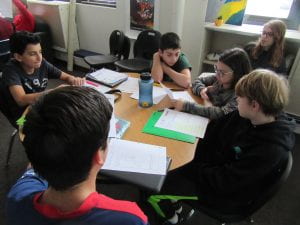First off: Gev. McAdams and Gev. Jirovetz are amazing at what they do!
Secondly: they let me steal their amazing teaching strategies (and make me look good while doing that).
The 7th graders all read an article about the good and bad of urban gardening projects in Milwaukee (as it relates to our question of how do we get healthy food options to people cheaply; especially those living in poverty and food deserts). When reading this article, they were asked to write down five passages from the article that they: 1. agreed with, 2. disagreed with, 3. had heard of before, 4. found interesting, and 5. wanted to talk about. They did this process alone. Next, they gathered in small groups of 4-5 students. One person started the conversation by stating the topic (meaning “something I agree with…). Every student then got a chance to share something that related to that topic, with the person who started the conversation having the last word. From there, organic conversations and questions popped up, which was awesome to hear about (I heard a lot of “why do you think that” and even heard a conversation about the merits of investing in solar arrays for one’s house).
It was great to see them having an informed and intense discussion of the good and bad of urban gardening in Milwaukee.






